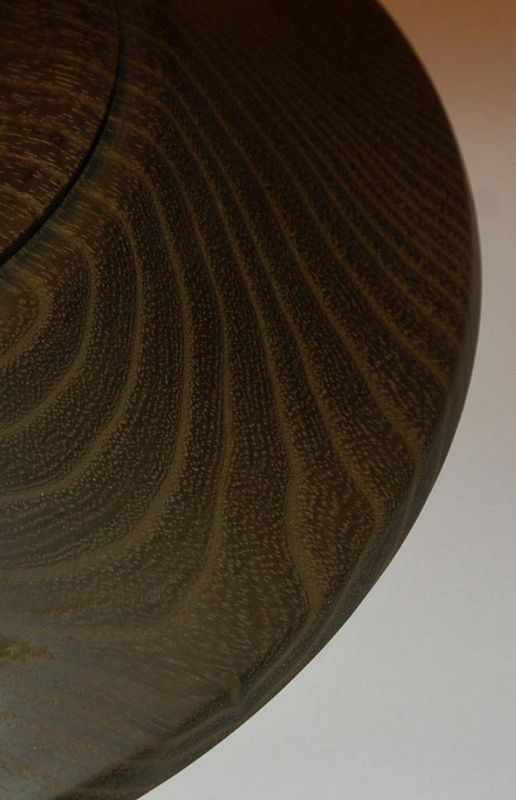Neil Farrer
Established Member
I have a lot of Acacia, or as it should more properly be called False Acacia or Black Locust through my local council taking down some 150 year old trees, I thought I ought to be a responsible citizen and offer to remove it for free! The wife is about as fed up as a woodturning wife can be of the five tons of the stuff in piles under canvas in the back garden!
However, aware that False Acacia is high in tannin I fumed this piece as it was due to be a bowl of magnificent proportions that succumbed to be ever decreased in size until I had turned out the faults. One can still be seen in the centre of the bowl, a dead knot that fell out as I put it in the fuming cupboard (posh name for a see through plastic box from Staples!) So it ended up as an unimaginative soup plate style bowl destined for a fuming experiment.
One of the down sides of ebonising spray is that however fine the spray, it is still a paint and covers up the detail. I have included a few photos for your deliberation and discussion. I think its great how the detailing of the wood is preserved. This piece was sanded to 800 and then fumed for three days with 25% solution. Boy it stunk when I took it out of the box!!!


However, aware that False Acacia is high in tannin I fumed this piece as it was due to be a bowl of magnificent proportions that succumbed to be ever decreased in size until I had turned out the faults. One can still be seen in the centre of the bowl, a dead knot that fell out as I put it in the fuming cupboard (posh name for a see through plastic box from Staples!) So it ended up as an unimaginative soup plate style bowl destined for a fuming experiment.
One of the down sides of ebonising spray is that however fine the spray, it is still a paint and covers up the detail. I have included a few photos for your deliberation and discussion. I think its great how the detailing of the wood is preserved. This piece was sanded to 800 and then fumed for three days with 25% solution. Boy it stunk when I took it out of the box!!!





































